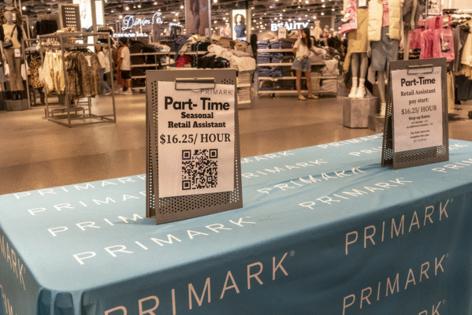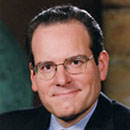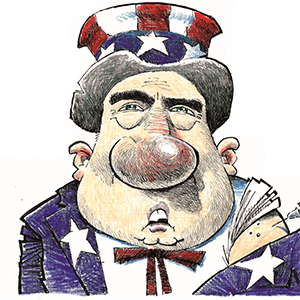US payrolls increase by just 12,000, hit by storms and strikes
Published in Business News
U.S. hiring advanced at the slowest pace since 2020 while the unemployment rate remained low in October, a month distorted by severe hurricanes and a major strike at Boeing Co.
Nonfarm payrolls increased 12,000 last month, and hiring over the previous two months was weaker than previously thought, suggesting the underlying labor market continues to cool. The unemployment rate held at 4.1% and hourly earnings ticked up, according to Bureau of Labor Statistics figures released Friday.
BLS said two hurricanes that hit the Southeast U.S. likely affected hiring in some industries, but it wasn’t possible to quantify the net effect on the change in employment, hours or earnings last month. There was no discernible effect on the unemployment rate, however. The report also showed manufacturing jobs plunged, largely reflecting strike activity in October.
Taken together, Friday’s data indicate the labor market is still softening beyond the temporary factors and caveats. This is the last major data point on the economy before the U.S. presidential election and is expected to keep the Federal Reserve on track to cut interest rates next week.
“While it’s hard to fully parse out how much of this was noise versus signal, I think you do see enough softening here to indicate that the jobs market is still struggling to gain its footing,” said Sarah House, senior economist at Wells Fargo & Co.
Fed officials are more focused on preserving the labor market with inflation largely on a downward trend. Policymakers are widely expected to cut interest rates by a quarter percentage point at their Nov. 6-7 meeting, a more measured adjustment after an outsize reduction in September.
The rate cut followed a weak August job report. Friday’s report showed that payrolls figure was even weaker than initially reported, rising just 78,000 in the month. But September’s employment report — which came out shortly after the Fed met — was a blowout.
Subsequent data also pointed to solid economic activity, encouraging several officials to advocate for a more gradual approach to rate cuts going forward. Figures out earlier this week showed the economy grew at a strong pace in the third quarter while inflation picked up in September.
That data led some to worry the economy was reaccelerating. Andrew Hollenhorst, Citigroup Inc. chief U.S. economist, said “this report makes it really clear that that’s not what’s going on.”
The S&P 500 was higher and two-year Treasury yields dropped following the report.
Hiring increased in health care and government, but employment in other industries was largely flat or negative. Sectors including retail trade, transportation and warehousing, and leisure and hospitality all declined — likely a reflection of weather-related disruptions. Manufacturing payrolls employment fell 46,000, the biggest drop since April 2020 and largely reflecting strike activity including 33,000 Boeing workers.
Separately, Boeing has reached a tentative agreement with union leaders to end the strike, which the union urged members to accept. It plans to hold a vote on the proposal on Nov. 4.
The combination of the strike and two powerful hurricanes led econonists to see a wide range of outcomes for the report, with estimates ranging from a decline of 10,000 to a gain of 180,000.
The response rate for the survey of businesses, which informs the payrolls figure, was 47.4% — the lowest since 1991, likely a reflection of the storms cutting the collection period short. The BLS continues to survey firms in subsequent months, which usually boosts the response rate close to or above 90% and can lead to large revisions.
Hurricane Helene made landfall Sept. 26, and Milton struck on Oct. 9 — during the reference period for payrolls. The jobs report is composed of two surveys. The payrolls number comes from a survey of businesses, and if an employee misses the entire pay period that includes the 12th of the month, they wouldn’t count as employed — even if they still technically had a job but just missed work due to bad weather.
The household survey, which is used to calculate the unemployment rate, wouldn’t rule that person out. That measure surprisingly painted an even drearier picture of employment, falling for the first time since May.
The number of people who said they weren’t at work due to weather jumped to 512,000, the most since January. About 1.4 million people who usually work full time could only work part time, which is more than five times the historical average for October.
The unemployment rate held steady, but the number of people who lost their jobs increased by the most since February and fewer people left their jobs. The participation rate — the share of the population that is working or looking for work, and is also derived from the household survey — edged lower. The rate for workers ages 25-54, also known as prime-age workers, dropped to 83.5%, the lowest since April.
Despite a solid economy and low unemployment, high prices have led Americans to be generally downbeat about the economy for most of Joe Biden’s presidency. Inflation has eased substantially from a peak in mid-2022 but prices for most goods and services are notably higher, forcing many consumers to tap into savings and credit cards to make ends meet.
The Trump campaign jumped on the jobs report with spokeswoman Karoline Leavitt calling the print “a catastrophe” in a statement. Julie Su, Acting Secretary of Labor, meanwhile called it an “anomaly” during an interview on Bloomberg Television and said there has been positive job growth each month since Biden took office.
Average hourly earnings rose 4% from a year ago, down from near 6% in early 2022, the BLS said. Wage growth for production and nonsupervisory employees, which covers the majority of workers, picked up slightly to 4.1%.
Earnings growth has largely eased amid a growing pool of available workers and waning demand for new hires, allowing many employers to pull back on incentives to attract talent. Other BLS data this week showed growth in employment costs moderated in the third quarter while U.S. job openings fell to a more than three-year low in September.
Separately, the BLS said in the report it has “paused plans” to reduce the sample size of the household survey — a decision initially announced in June due to budget constraints and declining response rates. The BLS said in a notice Tuesday that the recently passed stop-gap funding bill in Congress — which gave the survey a short-term boost — allows the agency to spend funds for the survey at a faster rate.
(With assistance from Chris Middleton, Mark Niquette and Jarrell Dillard.)
©2024 Bloomberg L.P. Visit bloomberg.com. Distributed by Tribune Content Agency, LLC.












Comments